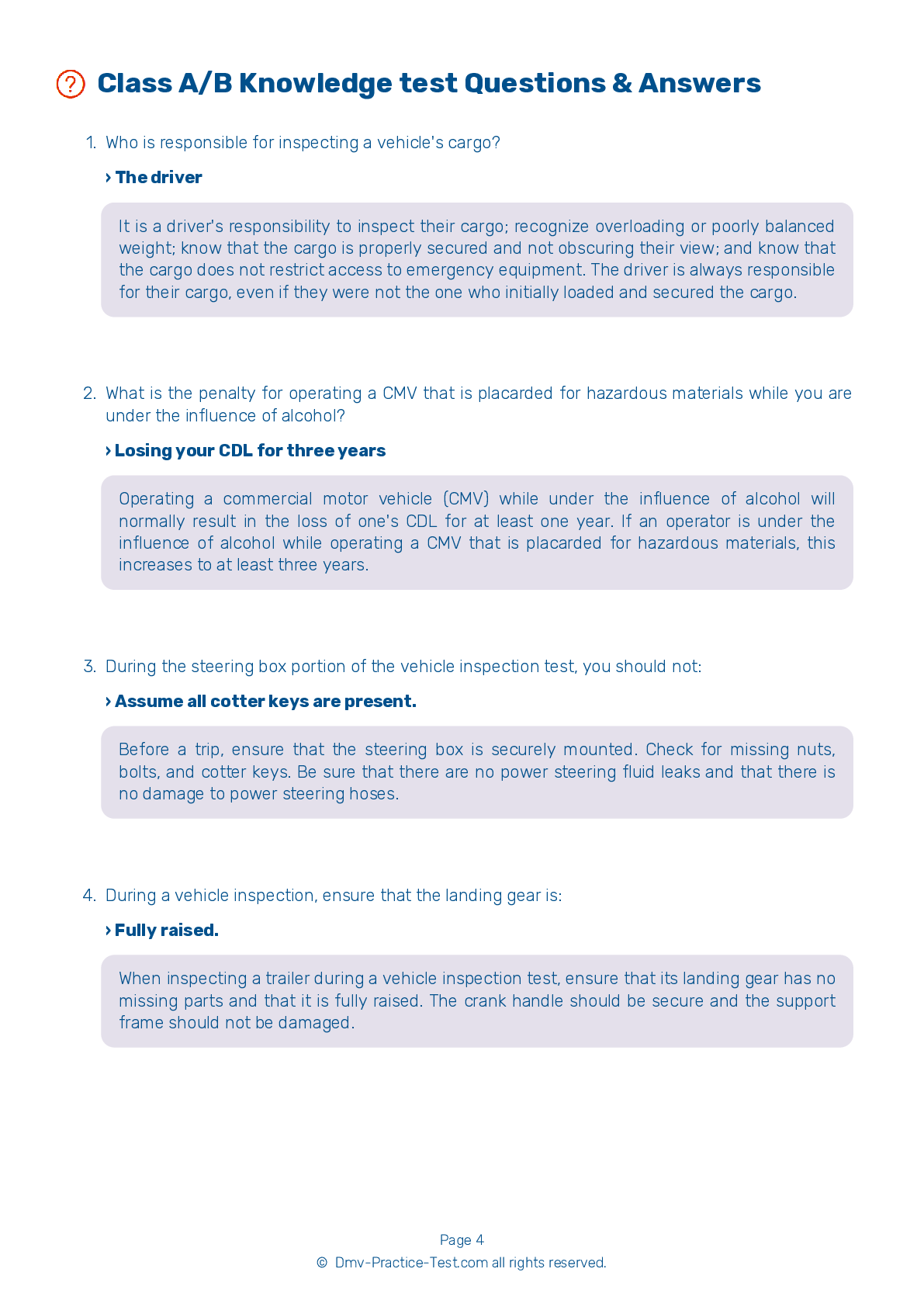Class B Driving Test | Texas 2026 #1 Page 6 of 7
Train for FREE online with our Texas class B license test. The official exam test consists of several obligatory parts, with all of them checking your knowledge of different blocks of road rules. If you need to obtain a TX CDL class B permit in 2026, practice as much as possible. Free sample tests published on our website will help you check and improve your knowledge and boost your grades. Please bear in mind that CDL class B requirements may vary from state to state.
36 . When crossing railroad tracks, you should:
When crossing railroad tracks during the on-road driving skills test, you must not stop, switch gears, pass another vehicle, or change lanes while any part of your vehicle is in the crossing.
37 . When asked to make a lane change during the skills test, you should:
You will be asked to make multiple lane changes during the driving skills test. Before changing lanes, you should make the necessary traffic checks and use proper signals. Change lanes smoothly when you can do so safely.
38 . When parked on the side of the road, you should:
Always turn on your four-way emergency flashers if you must park on the side of the road. This is especially important when traveling at night.
39 . When entering traffic on an expressway during the skills test, you should:
During the on-road driving skills test, you may be asked to enter an expressway. Before doing so, you must check traffic, use proper signals, and merge smoothly into the proper lane.
40 . What can happen if your vehicle has a high center of gravity?
The height of a vehicle's center of gravity is very important. A high center of gravity (cargo piled up high or heavy cargo on the top of a load) increases the possibility of your vehicle tipping over.
41 . Why do you need to drain air tanks regularly?
Compressed air in an air brake system usually contains a certain amount of water and compressor oil. The water and oil can damage the brakes if left to accumulate in the system. Tanks must be drained regularly to remove this build-up.
42 . The two indicators that determine when you should upshift are:
There are two indicators that determine when you need to shift into a higher gear. One indicator is the engine speed (rpm). You should read your vehicle's manual to learn its rpm range and shift up when you reach the top of that range. The other indicator is road speed (mph). You should learn which speeds each gear can accommodate, then keep an eye on the speedometer and shift up as needed.
See the exact questions that will be on the 2026 Texas DMV exam.
99.2% of people who use the cheat sheet pass the FIRST TIME
Lillian MCcranie explains how our CDL study guide was helpful in passing the exam and recommends it to everyone.
Cameron tells us how he purchased the CDL exam, and found it to be a useful tool which helped him pass the exam and find a job.



